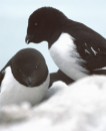The ocean is an unforgiving place for birds, and the species that inhabit it are some of the toughest in the world. Many seabirds look the part, with hefty proportions, drab attire, and stern expressions seeming to convey the difficulties of their pelagic lifestyle. One group, though, combines hardy perseverance with a healthy dash of adorable, and that group is the alcids.
The alcids – called the auks in Europe – constitute the family of birds that contains the well-known puffins. The puffins certainly set the bar for cuteness, but all birds in this group share their stout, stubby build, sharp dress, and endearing face. Less familiar members include the murres, murrelets, guillemots, auklets, and the enigmatic Razorbill. The most interesting cousin of all though, in my opinion, is the smallest: the diminutive Dovekie.
Dovekie, Razorbill and Atlantic Puffin are all alcids:
Dovekie, Razorbill and Atlantic Puffin are all alcids:
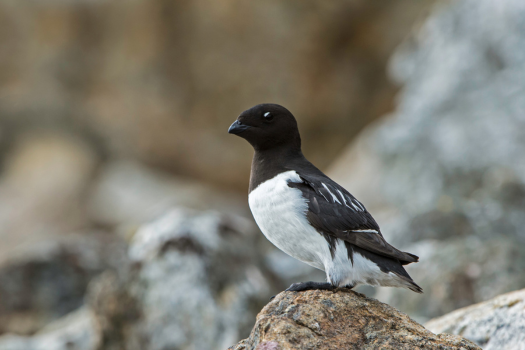
Dovekie (in breeding plumage)
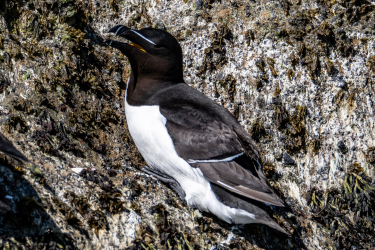
Razorbill (Photo by Sherry Kirkvold)
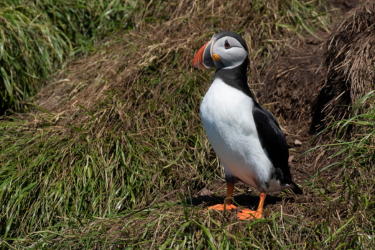
Atlantic Puffin (Photo by Kyle Horner)
The Dovekie (simply pronounced “duhv-kee”, and called Little Auk in Europe) does not enjoy the same notoriety as the puffins, and that is a grave injustice. It is certainly not as colourful as its clown-faced cousins, but as a trade-off it is very, very small. An adult Dovekie is no bigger than a baked potato, and would rest comfortably on the palm of your hand. The name Dovekie is an old Scots word meaning “little dove”, and a dove is a reasonable size comparison for this tiny alcid.
At first glance the tuxedoed Dovekie calls to mind a penguin, though it is a mere tenth the size of even the smallest of those Antarctic swimmers. The similarities are perhaps unsurprising as the Dovekie is built for very penguin-like activities, namely diving deep in cold ocean waters in search of prey. It even swims using its wings like a penguin, though unlike a penguin, it can also use those wings to fly.
Given its tiny size, it would make perfect sense to assume that the Dovekie is a delicate bird of calm waters and sheltered harbours, but this assumption could not be further from the truth. The Dovekie may be the smallest of the auks, but it leads the most incredible and tenacious life of the bunch.
Dovekies nest on boulder-laden lower slopes at the base of cliffs high in the Arctic where they seek a spot that is well-defended from gulls, foxes, and other marauding predators. These inaccessible nesting sites are often far from the Dovekie’s preferred feeding grounds, so when the young have hatched the doting parents fly up to 100km from the nest daily in search of food. Having located just the right spot, they plunge to depths of up to 30m in the frigid ocean waters to hunt for marine invertebrates and fish with which to provision the chicks.
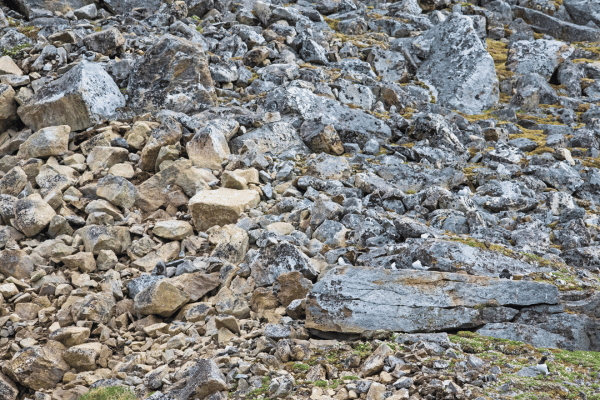
Dovekies nest in crevices among boulders. The birds can be hard to see even as they rest on top of boulders (Photo by Justin Peter)
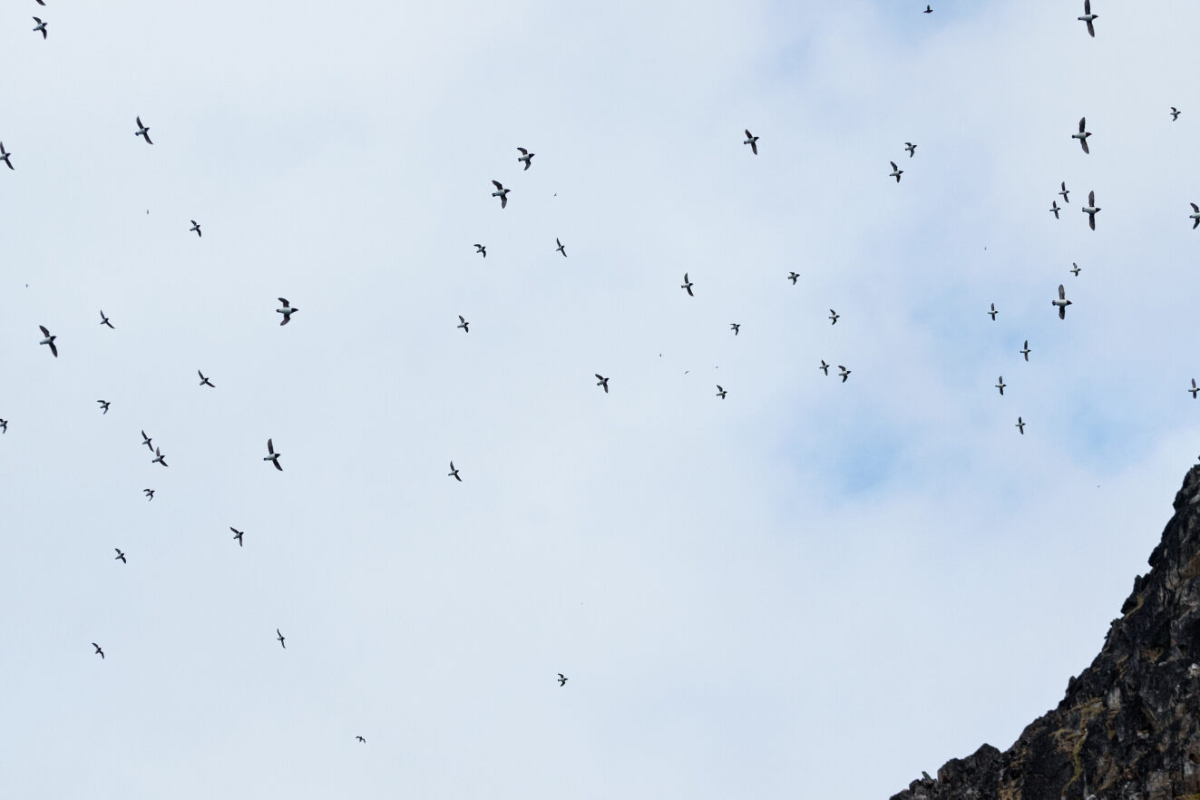
Flocks of breeding Dovekies can make spectacular flights when swirling about their colonies
(Photo by Justin Peter)
It will not surprise you to learn that - having spent the summer in such a harsh environment - the Dovekie migrates when fall arrives. It may surprise you, however, to learn that the Dovekie’s idea of a winter vacation may involve the icy and violent waters off the east coast of Canada and the northeastern United States! Like the other alcids, the Dovekie is fully pelagic outside of the breeding season; that means it remains in the water during the non-breeding time, not setting foot on land between its departure from its nesting cliffs in late summer and its return to them the following spring.
Dovekie in winter plumage diving off a beach (Video by Marc Plomp)
One of the best places to see Dovekies in winter is along the coasts of Newfoundland, where their tenacity and toughness have earned them the nickname “bullbirds”. They look inexplicably at home bobbing and diving in the surf off Newfoundland’s rugged shorelines. They are easily among the grittiest, toughest, and cutest birds on the planet, and the opportunity to spot them braving their extreme environment is reason enough to visit Newfoundland in winter all by itself.
Editor’s Note: It is much farther than Newfoundland, but Svalbard is also a good place to see Dovekies, namely during the breeding season.
Editor’s Note: It is much farther than Newfoundland, but Svalbard is also a good place to see Dovekies, namely during the breeding season.


